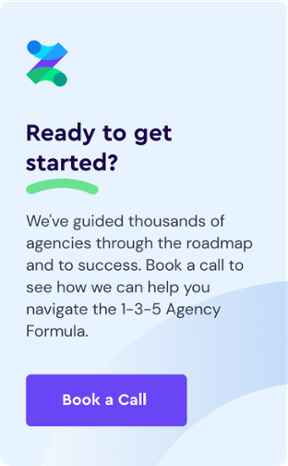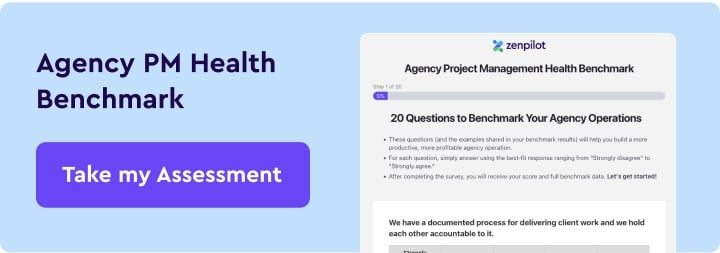How to Quit Following Client Demands
To chat with Gray and have ZenPilot lead your team through the last project management implementation you'll ever need, schedule a quick call here.
This is the eighth post in a series on the Agency Freedom Manifesto.
In the last post, we discussed how to train better clients via your sales process.12
Today, let’s tackle the next step in the client journey — once you’re working with a client, how do you lead the strategy and not simply follow your client’s demands?
I’ve heard different variations of the following phrase:
There’s no such thing as a bad client, only bad process.
As you’ve probably experienced, there certainly are bad clients.
By and large, those bad client relationships stem from bad judgement, bad process, or a combination of the two.
And most of these “client from hell” experiences stemming from bad judgement or bad process boil down to a lack of strong leadership from the agency.
The Wrong Way to Lead Your Clients
Here are two of the most common ways that agencies fail to properly lead clients:
1. Taking on Clients Against Your Better Judgement.
Most agency owners have been in a cash position where they’ve felt the financial pressure to take on a client who does not fit their ideal-fit prospect profile.
Rather than leading during the sales process by voicing their concerns and allowing the prospect to either walk away or dig deeper to ensure a good fit, many agencies will simply bring on the client and “suck it up.”
This isn’t fair to the agency team or the client and usually ends poorly.
2. Accepting Requests Solely to Pacify Your Client
We see this so frequently. You leave the client meeting with a completely different list of tasks than you’d anticipated.
Or the change request comes in and you decide to go ahead and make the logo bigger because it’s all about “keeping the client happy.”
It’s great that you want happy clients. That’s not the problem.
The problem is that you’re training them that their whims and desires are the most valuable items to work on, rather than the course you’ve carefully plotted to get them to their desired outcome.
Too often, this culminates in poor results because the agency didn’t stand up and redirect the client back to the inputs that would achieve the right end goal.
If you were hired to solve a problem and produce a result, your job is to ensure that outcome, not pacify every client request.
The Right Way to Lead Your Clients
Contrary to the common mistakes, let’s look at a quick rundown of the correct way to lead your clients.
1. Invest in deep expertise and bring on ideal-fit clients.
This requires narrowing your focus.
You need to learn how to help one ideal-fit client solve a costly problem. Perfect that journey, and then you’ll have earned the right to move on to the next challenge.
That deep expertise makes you irreplaceable, allows you to charge a premium, enables your team to achieve mastery and consistently deliver amazing results, etc.
2. Use that expertise to standardize a winning client journey.
By focusing on delivering a solution to a costly pain, rather than simply providing services to a wide range of clients, you’re earning the ability to standardize your path to value.
And that standardization allows you to rapidly iterate and improve on that process.
Each new client benefits by getting a better experience than the last one. And you get to apply all your new learnings and improvements to your current clients. Everyone wins.
3. Demonstrate the value of following your process.
No, clients don’t usually come in expecting to pay a lot of money and then be told what to do.
The industry has trained them poorly.
Rather than simply telling them that following your process is the best path to their goal, you need to show them.
Demonstrate how your standardized sales process delivers immediate value.
Show them how the systematized onboarding is a better customer experience.
Allow them to experience how you’ve mastered the quickest path to value and the best way they can help is by contributing to that clear path that you’ve led with.
The best relationships involve strong, healthy leadership. Build this in to your marketing, sales, and delivery for better, more profitable client engagements.




